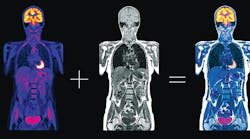Microwave technology may be best known to most users as relating to their previous night’s dinner, rather than the means of a military radar system or commercial communications network. But microwave energy also has the potential to change the way that medical treatment is given to many patients, particularly for those with breathing and circulatory system problems.
Microwave radiation may be the way to relieve circulation buildup in a patient’s brain that resulted in a stroke or similar condition bringing them to a hospital or other medical treatment facility. Microwave medical tools are well-suited for pre-hospital care because they can be built in compact formats at relatively low cost and made easy to use so that treatment can begin upon a patient’s admission to a hospital or other medical facility.
Researchers from the Department of Electrical Engineering, Chalmers University of Technology; MedTech West; Sahlgrenska University Hospital; and Institute of Neuroscience and Physiology, Department of Clinical Neurophysiology, Sahlgrenska Academy, Goteborg University—all located in Goteborg, Sweden—explored the use of microwave systems not only for medical treatment, but for diagnosis of a patient’s condition upon admission to a medical facility. In particular, for circulation problems in the brain, such as those leading to stroke, early and accurate diagnosis of a patient’s symptoms can be critical in developing a successful treatment program for that patient.
The microwave frequency range of 100 MHz to 10 GHz is appealing for medical. The researchers point to medical work beginning in the late 1970s and continuing through current interest in the use of microwave diagnostic tools for the detection of breast cancer. Accurate radar imaging of a human brain begins with the development of an antenna system and a portable and easy-to-use scanning system that is able to function properly with different head sizes and with interference from external energy sources.
The research team’s contributions to this development of medical microwaves includes simulation studies on the human head and brain at different frequencies, and has helped enable the development of early medical systems for brain analysis using microwaves. One such system is The Strokefinder MD100 from Medfield Diagnostics AB, which uses an antenna array to create three-dimensional (3D) images of a human brain. More will follow.
See “Microwave Diagnostics Ahead,” IEEE Microwave Magazine, May 2018, Vol. 19, No. 3, May 2018, p. 78.

